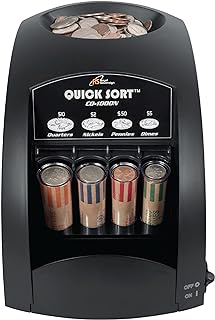5 important factors worth considering when looking for the best copy paper
When buying copy paper, you need to think about important things like quality, brightness, sustainability, and price. These factors affect how good the paper is and how it will impact your printing, the environment, and your wallet. It’s crucial to make a smart choice based on these factors to get the best value.
See our guide to the best copy paper.
Paper weight
Choosing the right weight of paper is crucial for office workers who print documents regularly. The weight of the paper affects how durable and high-quality your prints will be. Heavier paper can make your documents look more professional and reduce the chances of ink bleeding through. It shows that you pay attention to details and value quality, which can impress both clients and coworkers.
Additionally, the weight of the paper you choose can greatly impact how your printed materials appear. Thicker paper feels more luxurious and substantial, making the reading experience more enjoyable. This level of detail can improve your brand image and help your documents stand out. Even though it may seem like a small thing, the weight of the paper is a subtle but effective way to enhance the overall impact of your prints, making it a worthwhile investment for any business or individual looking to leave a lasting impression.
Brightness
Choosing the right copy paper is important, and one key feature to consider is brightness. Brightness refers to how much light the paper reflects, affecting how vibrant and professional your prints look. Higher brightness levels can make text sharper and images more vivid, impressing anyone who sees your printed materials.
Brightness not only affects aesthetics but also readability. Bright paper is easier on the eyes and helps ensure your message is clear. Despite the variety of copy paper available, don’t overlook the importance of brightness. Investing in bright paper can enhance the quality of your prints, whether it’s a resume, business proposal, or creative project.
Next time you buy copy paper, think about how brightness can make a difference. Let your prints stand out with a brilliance that captures attention and makes a lasting impression.
Opacity
When buying copy paper, it’s important to consider opacity. Opacity refers to how well the paper prevents ink from showing through the other side, resulting in clear prints. Higher opacity means better quality paper, reducing distractions and making printed content more vibrant. Choosing paper with superior opacity can greatly enhance the impact of your documents and presentations in a professional setting.
Picking copy paper with good opacity ensures a polished look and demonstrates a commitment to quality. By choosing paper that maintains its opacity, you are investing in a reliable product that improves your work and sets a high standard. In a competitive market, prioritizing opacity can set you apart, leading to documents that are sophisticated and easy to read.
Size
When you’re buying copy paper, the size you choose is really important. It can make a big difference in how well your printing turns out and how easy it is to use. Most people go with the standard letter size (8.5 x 11 inches), but bigger sizes like legal (8.5 x 14 inches) or tabloid (11 x 17 inches) have their advantages too. These larger sizes are great for printing things like presentations, brochures, or posters without having to cut or resize them, which saves time and effort.
Picking the right paper size can also make your printed materials look better. With a bigger size, you have more room for designs, images, and information, making your presentation more interesting and professional. Using different paper sizes lets you get creative and make your materials stand out. Knowing the importance of paper size in printing helps you make smart choices that meet your needs and improve the quality of your printed materials.
Finish
The type of finish on copy paper can make a big difference in how it looks and feels. If you choose a matte finish, it can reduce glare and make the paper smoother, which is great for things you need to read a lot. On the other hand, glossy finish gives a more professional look, which is good for things like presentations with lots of color and sharp images. Whether you like the classy look of matte or the bold look of glossy, the finish you pick can change how people see your work.
In the world of copy paper, the finish is not just about looks – it also affects how well the paper works. A satin finish gives you the best of both worlds, with a smooth feel like matte and vibrant colors like glossy. Textured finish adds a special touch that’s great for special projects like invitations or art. Knowing the differences between finishes can make your printing better, turning boring documents into powerful tools that really grab people’s attention.
Conclusion
In today’s digital world, copy paper may seem simple, but it plays a crucial role in our lives. It helps us share ideas and knowledge, connecting us even when we are far apart. As the world changes quickly, we should not forget the importance of this unassuming material that helps us communicate, create new things, and keep our stories alive. Want more info on david archy pouches, check the best david archy pouches.


